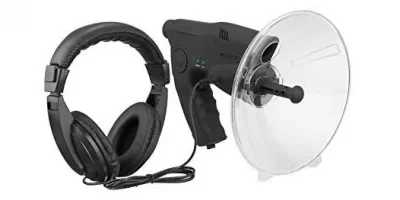Buoyancy is generally known as the upward force that tells whether an object will sink or float. It helps to measure the displaced gas or fluid and differences in the object’s density. The 2 competing forces are measured with Buoyancy, where one force focuses on the fluid’s upward pressure on the object, and the other focuses on the object’s downward pressure on the fluid. Further, Buoyancy was classified into three types – Negative Buoyancy, Positive Buoyancy, and Neutral Buoyancy.
Research shows that the buoyant force is affected by important factors like the volume of the displaced fluid, the density of the fluid, and the local acceleration of gravity. In this post, the major focus has been given to Negative Buoyancy by deriving the related concepts so that you can gain the right knowledge about it. This post highlights the principles of Archimedes, and the differences between Negative, Positive, and Neutral Buoyancy.
Explanation of the Archimedes Principle
The Greek mathematician Archimedes discovered the concept of Buoyancy. He compared the King’s gold crown weight with other substances and created the concept of Buoyancy. Archimedes experimented by dropping the gold crown in water and identified that some gold coins sank faster to the bottom.
A law of physics is applied to his experiment and received fundamental importance in fluid mechanics. The principle of Archimedes indicates the displacement of fluid and the buoyant force. His principle states that if an object is immersed partially or completely in a fluid, it results in an apparent loss in weight that s equal to the fluid weight displaced by it.
The Buoyancy concept applies to different settings and fields. It applies to weather balloons that collect data from the stratosphere and vessels surveying the ocean floors. Let’s understand different aspects of buoyant force to get a deeper insight into Negative Buoyant Water.
The differences between Negative, Positive, and Neutral Buoyancy
Negative Buoyancy
Negative Buoyancy takes place when an object is denser than the displaced fluid. It means that an object is heavier than sinks and water. The object will sink as the weight exceeds the Negative Buoyant Force. For instance, a submarine is designed specially to operate underwater with the help of ballistic tanks that release and store water. Here, the tanks take in water and raise the vessel’s density to descend.
- Positive Buoyancy
Positive Buoyancy takes place when an object is lighter than the displaced fluid. As it has lightweight, it starts floating. Based on Archimedes’ principle, the buoyant force is greater than the object’s weight. For instance, a great amount of buoyant force is always experienced by the swimmers. If you love to float, you can visit the popular tourist attraction Dead Sea, where you can find less saltwater density than freshwater. As a result, it offers more buoyant force.
- Neutral Buoyancy
Neutral buoyancy occurs when an object’s weight equals the displaced fluid. For instance, skilled scuba divers regulate Buoyancy underwater using their special techniques. These divers do not go upward and propel forward because they swim horizontally and take deep breaths. The same is observed among fishes to control it with their internal swim bladder filled with gas. As a result, it provides an altering buoyancy.
After understanding these differences, you need to understand the main reason behind negative Buoyancy in humans.
Why is negative Buoyancy observed in humans?
There are several reasons behind negative Buoyancy in humans that are highlighted below.
- Normally, the human body consists of air space in the intestines, lungs, and other hollow organs. It has been observed that the human body has less air density than water so it will float.
- Negative Buoyancy occurs in humans when swimming underwater because more air is filled in the lungs and contains some liquid that humidify the inhaled oxygen. The negative Buoyancy fills up all these pockets with water.
- Another important cause of negative Buoyancy in humans is bone density. The negative Buoyancy is observed more in people with osteoporosis because of bone density.
- A full stomach and increased air consumption can lead to negative Buoyancy in humans. This is because the pockets will fill with gas if not realized through the mouth or lungs.
- The human fat percentage is another important factor that causes negative Buoyancy in humans. It has been identified as the fat is lighter than water, so there is a high chance of floating with high-fat percentages.
- Lung inflation with water is another cause of negative Buoyancy in humans. You should avoid going underwater without a regulator or snorkel to prevent this. Moreover, when swimming near the surface, you must avoid swallowing seawater.
- The Negative Buoyant Humans feel less negatively buoyant when they exhale most moisture leaves out and start snorkeling.
Is Negative Buoyancy risky?
After understating the concept of Buoyancy, now easily identify whether you are a Negative or Positive Buoyant. Is negative Buoyancy risky? When you identify an object heavier than sinks and water, you can easily identify the Negative Buoyant. It has been identified that the situation of negative Buoyancy can be dangerous, so you should do it very carefully. Such a situation can decrease the force amount to submerge someone.
Moreover, a Negative Buoyant Person can easily go below drown and water accidentally, which can be a more dangerous situation. This kind of Buoyancy is commonly found among children who don’t know how to swim in the water. When the kids build up their strengths and learn swimming skills, they can easily stay afloat and do not require longer negative Buoyancy. When you learn the art of maintaining negative Buoyancy, you can easily swim underwater.
Now that you know the Negatively Buoyant Meanings and differences, let’s understand the proper solution for negative Buoyancy.
What’s the right solution for negative Buoyancy?
There are diverse solutions for negative Buoyancy. One solution could be using fresh air with the support of a filled snorkel so that you do not need to come back for oxygen every time. Another great solution could be to fill the air pockets by exhaling them before going into breath-holding mode.
Tips to improve your buoyancy control
To acquire mastery in Buoyancy, you may require more practice and seriousness for a diving career. As a scuba diver, you must have a good balance in terms of exposure suit, breathing, weighting, body position, equipment, and more to achieve neutral Buoyancy. Here are the tips that can improve your buoyancy control in scuba diving.
- Maintain your weight right
One of the great factors in achieving neutral Buoyancy is wearing the right amount of weight. You need to understand these factors while diving that can impact whether you will float or sink, including the size of the cylinder, type of exposure, and how deep you will go. After considering this, you need to select the right amount of weight and compensate for every positive Buoyancy.
Many diving instructors go underwater overweight, but they compensate for that extra weight by making them more susceptible and adding more air into their BCDs. The best price for beginners is to maintain the right weight by justifying each pound and kilogram. Before going underwater, you must do a buoyancy check that can help to get a perfect optimal starting point for your Buoyancy.
- Use your lungs
If you want to maintain fine-tuning your Buoyancy, your lungs play an important role as a natural buoyancy compensator device. You can use your lungs to control the air you breathe in and exhale without deflating or inflating your BCD.
- Assume the body position
If you want to achieve good Buoyancy, you need to maintain your body position underwater. A good buoyancy always maintains a horizontal and smooth position, making their body ready and flat completely, fins pointing backward, and knees bent 90 degrees. You can avoid Negative Buoyant Fins when you combine the right finning technique.
Some divers face difficulty maintaining a prone body position because they do not distribute their weight properly. To find the optimal weight position, a diver must play around with the gear configuration. For instance, you can use steel cylinders because it is useful for higher up your body into the center of gravity and balancing buoyancy given by BCD. It has been identified that harness and backplate BCDs can better distribute your body weight.
- Keep calm and dive on.
When you are going diving, it is important to keep calm and relaxed. If you are nervous and anxious, it may cause you to float uncontrollably and quickly consume air. You need to observe your breathing by staying calm and understanding how your body reacts to every exhale and inhale.
- Know your equipment
Sometimes you may face Water With No Buoyancy while diving, but you can easily take action when you know your equipment. It has been identified that your Buoyancy gets influenced by the weight and size of dive gear. There are more chances of negative buoyance when you have a heavier piece of gear. However, the two pieces of gear can affect the Buoyancy based on the type of air tank and exposure suit. You can expect to get positive Buoyancy with a wetsuit and drysuit. Here, you need to consider the wetsuits’ age, condition, and thickness because it becomes less buoyant when you use them for more time. Moreover, your Buoyancy can get impacted by using a cylinder (size, aluminum, or steel). You can expect to get negative buoyant with steel tanks.
- Choose the BCD
When you choose the BCD, it fluctuates in size and weight throughout a dive, which can be deflated and inflated to change the displaced water. Thus, you need to have the proper training to use it properly. You need to add air to your BCD to maintain negative or neutral Buoyancy when you descend from a dive. On the contrary, you need to release air from your BCD to stay neutrally buoyant and maintain depth control when you ascend to shallower depths.
- Be aware of changes in depth and time.
When diving, you become less or more buoyant depending on the time and depth. Thus, it is crucial to be aware of the buoyancy shifts that cause changes in time and depth so that you can take action to adjust your Buoyancy.
What are the benefits you can get with Buoyancy Control?
If you are a newbie diver, you need to learn Buoyancy Control, which separates you from experienced veterans and seasoned pros. Once you learn the skill, you can become a proficient practitioner of Buoyancy and able to get many benefits, including;
- Reduced fatigue and improved air consumption
A bad buoyancy tends to move their limbs and flail around, which causes them to consume air quickly and exert much energy. But a neutral buoyant diver eases the work by conserving energy and air, maintaining their position in the water, and prolonging their bottom times.
- Increased Safety
The Diver’s Alert Network report shows that poor Buoyancy and overweighting are the major contributing factors to rising accidents in scuba diving. However, you can reduce the decompression illness risk by controlling ascent and descent rates.
- Better diving experience
When divers know how to control their movement, they can easily dive and enjoy diving. For them, it will be a more relaxed activity. Better buoyancy control improves confidence in your abilities and ability to get a closer look at marine animals.
- Protected marine environment
Good Buoyancy always protects marine environments by crashing into corals and rocks. These professionals go underwater and zoom out things without leaving any trace.
Conclusion
Overall, it has been identified that negative Buoyancy can be risky, but you need to find the right solution for Water Without Buoyancy. You can maintain negative Buoyancy by learning the art of breathing while diving. If you constantly try to dive, you can get useful results for negative Buoyancy.








Comments